Blog Content
16
Sep
2025
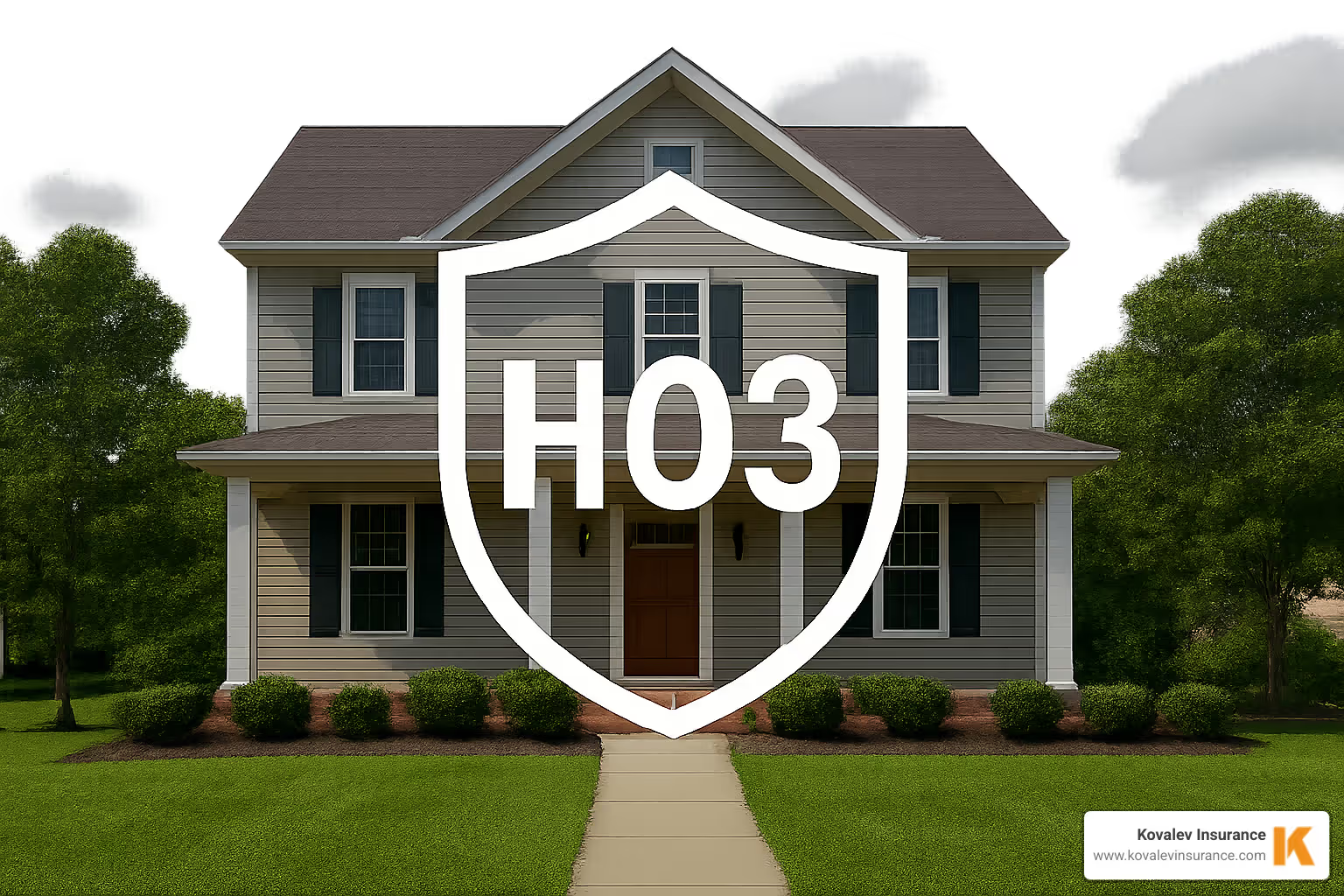
HO3 insurance is the most common homeowners insurance policy in the United States, protecting your home's structure on an open-perils basis while covering personal belongings for specific named risks. Here's what you need to know about HO3 coverage:
Quick HO3 Insurance Overview:
Whether you're buying your first home in Newton, refinancing in Wellesley, or reviewing coverage in Brookline, understanding HO3 insurance is crucial. This policy form offers the perfect balance of comprehensive protection and affordability that most Massachusetts homeowners need.
Your colonial in Needham or Victorian in Belmont represents both your largest investment and your family's sanctuary. This guide breaks down everything Massachusetts homeowners need to know about HO3 insurance - from coverage details and costs to local considerations in communities like Natick and beyond.
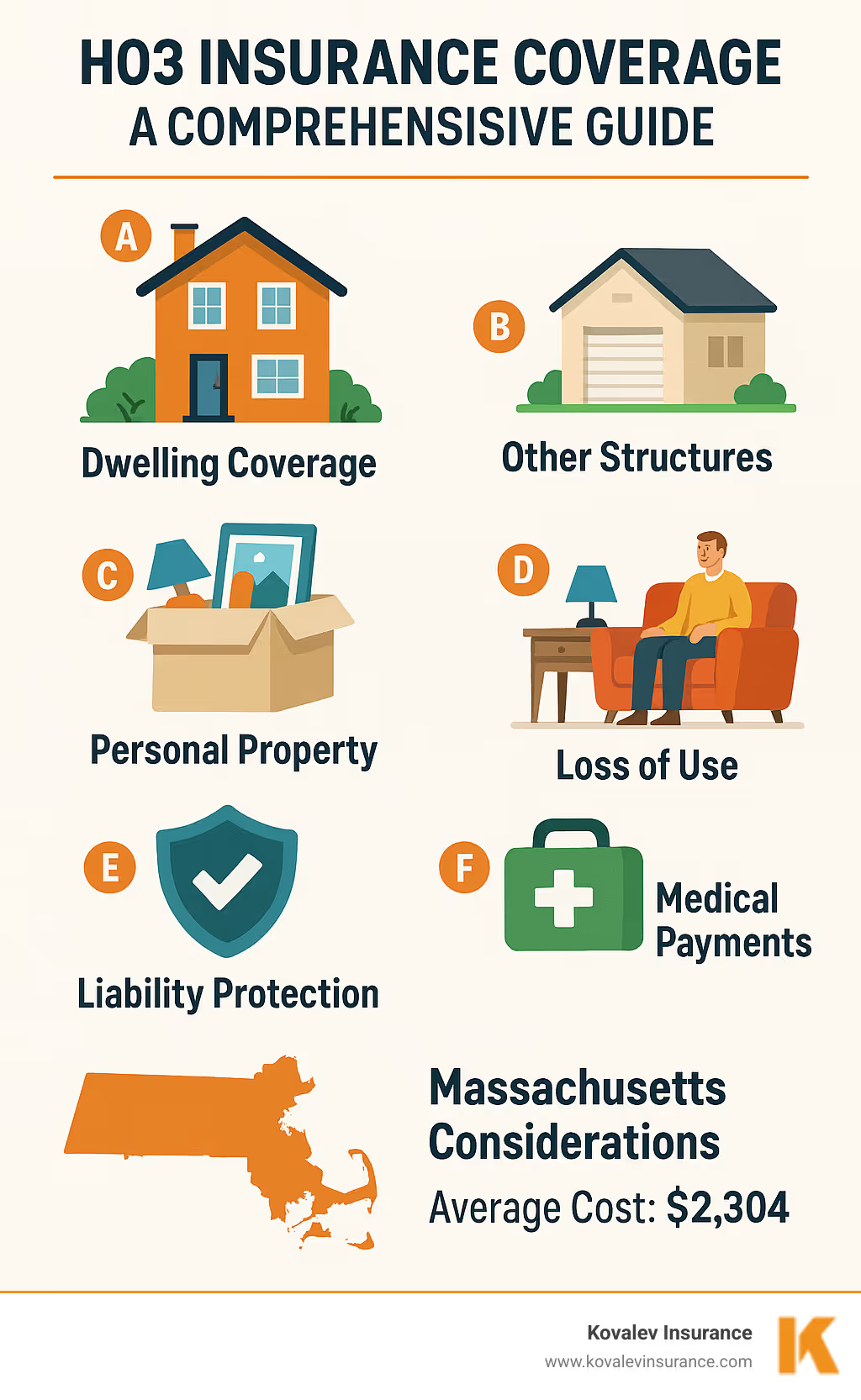
Ho3 insurance vocab to learn:
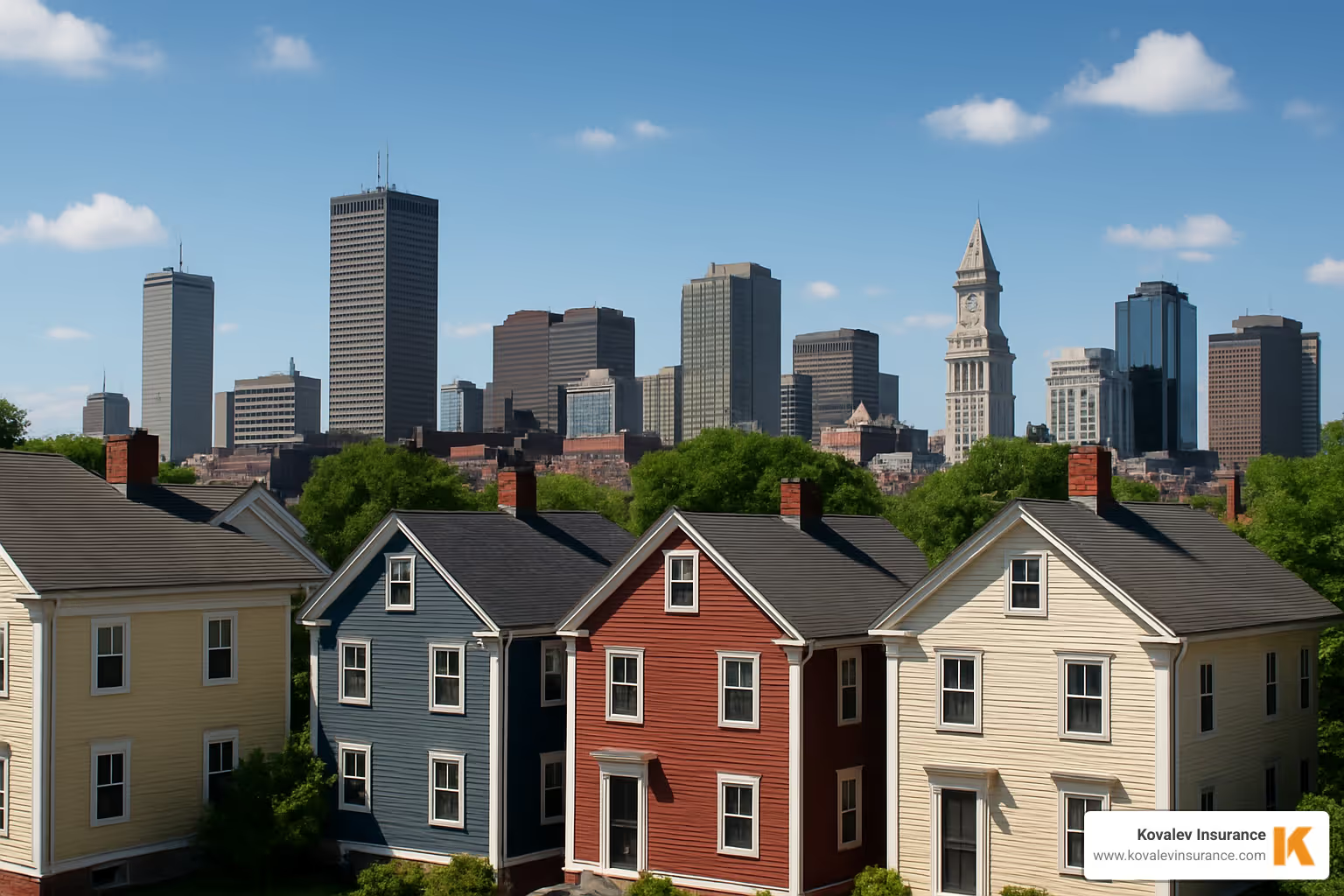
When you're shopping for homeowners insurance in Massachusetts, you'll quickly find that HO3 insurance dominates the market for good reason. The Insurance Services Office (ISO) classifies this as a "special form" policy, which is insurance-speak for "the sweet spot most homeowners need."
Think of HO3 insurance as the Goldilocks of homeowners policies - not too basic like HO1, not too comprehensive (and expensive) like HO5, but just right for most Massachusetts families. Whether you're protecting a classic colonial in Newton or a charming Cape Cod in Needham, this policy type has become the gold standard.
An HO3 insurance policy is essentially two powerful protections wrapped into one neat package. You get robust coverage for your home's structure plus liability protection that shields you from lawsuits. It's like getting a security guard for your house and a legal bodyguard for your family all in one policy.
The "3" isn't random - it's the ISO form number that helps insurance professionals instantly recognize what kind of coverage you have. Unlike renters insurance that only covers your stuff, or condo insurance that focuses on interior improvements, HO3 policies are designed specifically for people who own the whole enchilada - the house, the garage, the land, and everything on it.
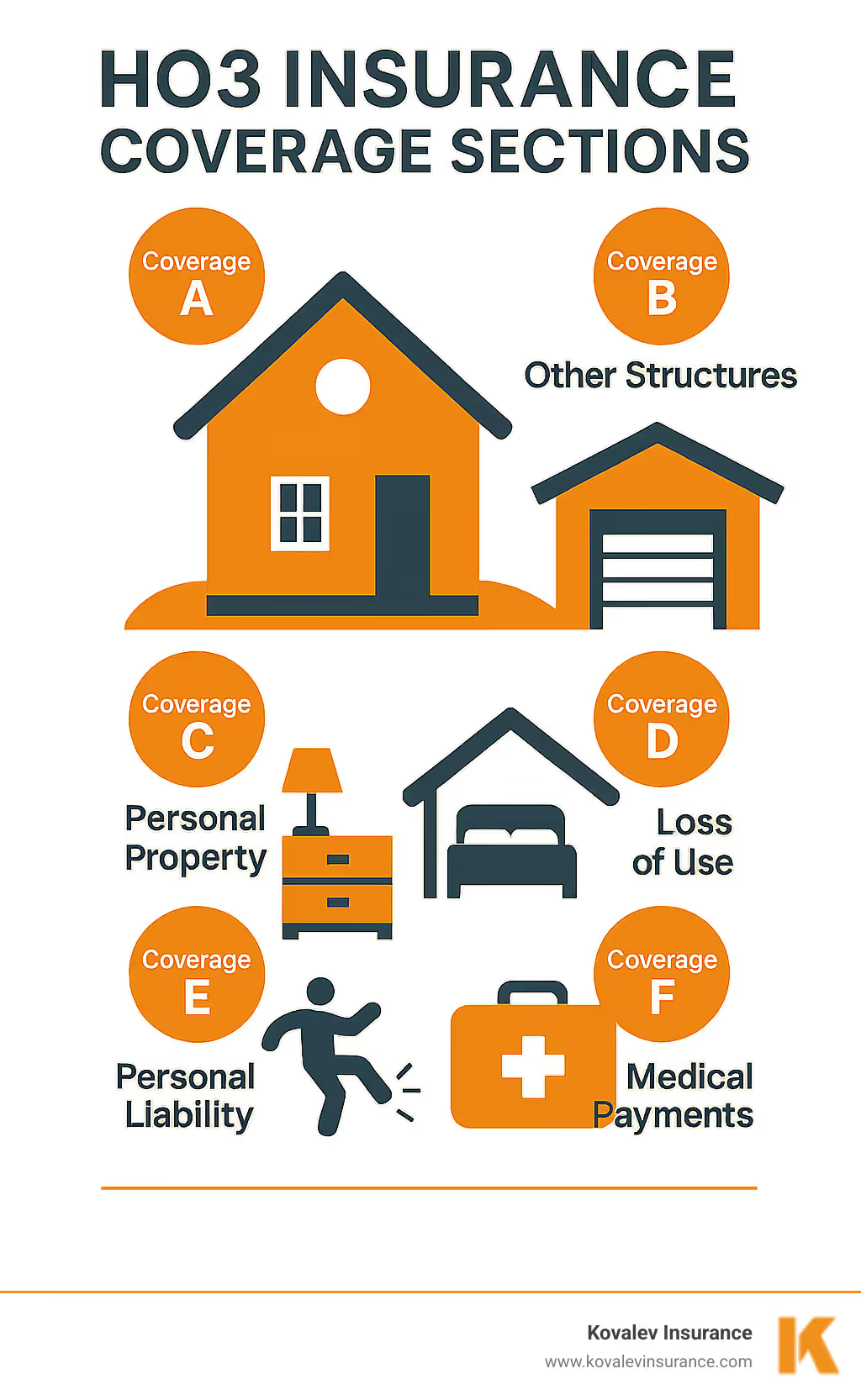
Here's where HO3 insurance gets really clever. Your house itself gets the VIP treatment with open perils coverage, which means it's protected against basically everything except what's specifically excluded in your policy. It's like having a bouncer who lets everyone in except the troublemakers on the list.
Your personal belongings, however, work differently. They get named perils coverage, which protects against 16 specific disasters like fire, theft, windstorm, and vandalism. This setup affects who has to prove what during a claim. If your roof gets damaged, the burden of proof falls on the insurance company to show why they shouldn't cover it.
In communities like Newton, Wellesley, Brookline, Needham, Belmont, and Natick, getting HO3 insurance typically requires one key thing: you need to actually live in the house as your primary residence. Weekend retreats and rental properties need different coverage types.
Most standard single-family homes, townhouses, and even some condos in these communities qualify perfectly for HO3 insurance. It's designed to be the reliable workhorse that protects the American dream of homeownership - Massachusetts style.
Here's where HO3 insurance gets interesting - and where many Massachusetts homeowners find surprises they wish they'd known earlier. Your policy divides protection into six distinct coverage sections, each with its own rules and limits.
The beauty of HO3 coverage lies in protecting your home's structure against virtually any disaster, while your belongings get protection from the 16 named perils specifically listed in your policy. But there are significant gaps you need to understand, especially here in Massachusetts where we face unique risks like nor'easters and coastal weather patterns.
The add about 10 percent rule often helps determine if you have adequate coverage limits across all sections.
Your home's structure receives the gold standard of protection under HO3 insurance. Coverage A protects your dwelling on a replacement cost basis, meaning you get the full amount needed to rebuild without depreciation. This includes your roof, walls, built-in appliances, hardwood floors, and all those architectural details that make Massachusetts homes so charming.
Coverage B handles other structures on your property with a default limit of 10% of your dwelling coverage. If your Wellesley home carries $600,000 in dwelling coverage, you automatically get $60,000 for that detached garage, garden shed, or fence. This 10% default often surprises homeowners when they realize their three-car garage might need higher limits.
Here's where HO3 insurance takes a different approach. Your belongings receive named perils coverage, protecting against specific risks like fire, theft, windstorm, and vandalism. Standard policies cover personal property at actual cash value (ACV), which means depreciation gets deducted from claim payments.
Replacement cost coverage for personal property costs about 10% more in premium but pays the full amount to replace items with new ones. Personal property limits typically equal 50-70% of your dwelling coverage. However, sublimits restrict coverage for certain items. Jewelry and watches might be limited to $1,500, firearms to $2,500, and money and coins to just $500.
Coverage D pays for hotel costs, restaurant meals, and other additional living expenses when your home becomes uninhabitable due to a covered loss. This coverage typically provides 20-30% of your dwelling limit.
Coverage E protects you from lawsuit defense costs and damages if someone gets injured on your property or if you accidentally damage someone else's property. Standard limits range from $100,000 to $500,000, though we recommend at least $300,000 for most Massachusetts homeowners.
The biggest gaps in HO3 insurance often catch Massachusetts homeowners off guard. Flood and earthquake damage require separate policies. Sewer backup needs an endorsement. Mold and neglect aren't covered unless they result from a covered peril.
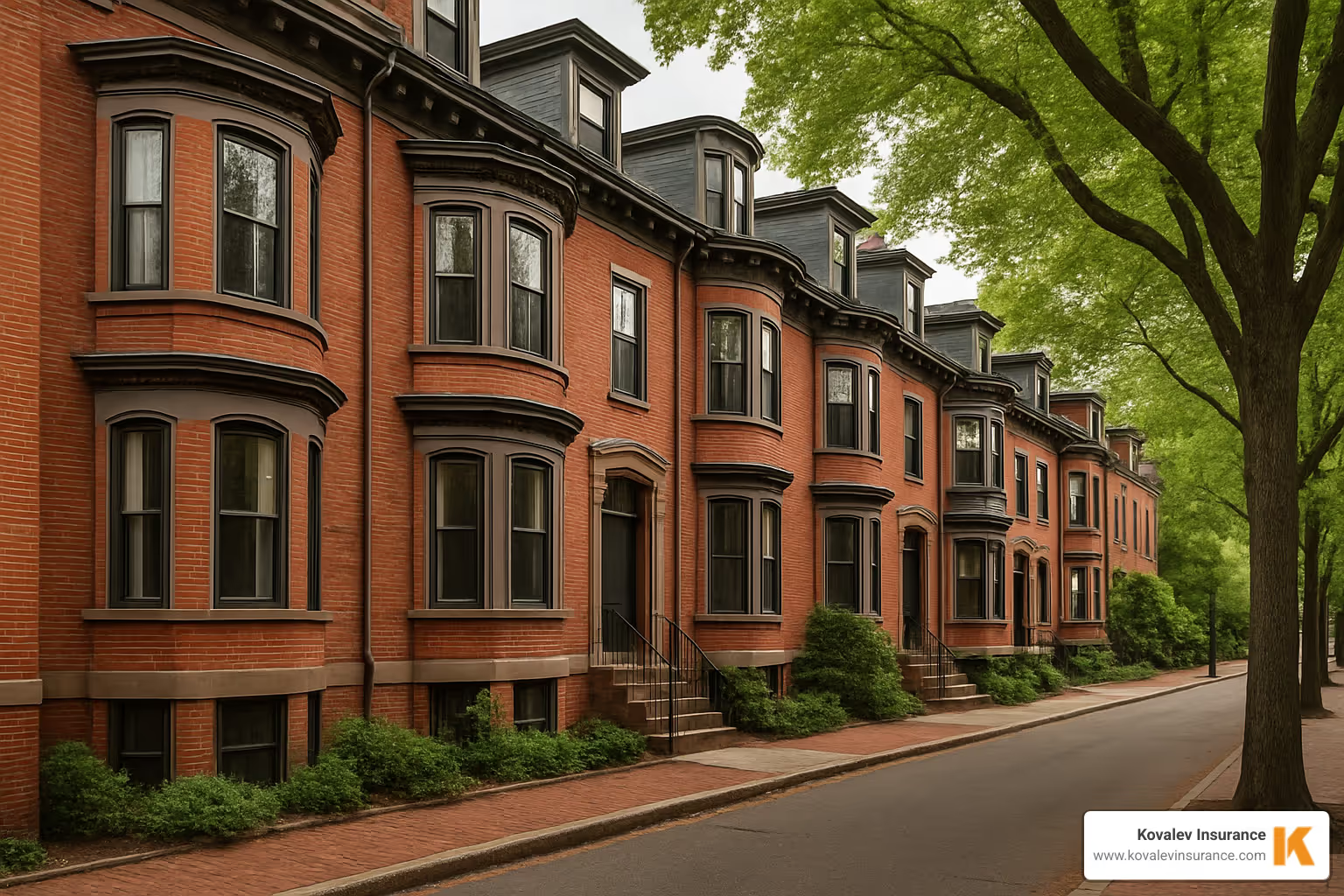
If you're wondering what HO3 insurance will cost for your Massachusetts home, you're asking the right question. Nationally, homeowners pay an average of $1,759 per year for coverage. But here in Massachusetts, for a typical home with $300,000 in dwelling coverage, you're looking at around $2,304 annually for HO3 insurance. That's about $192 per month to protect what's likely your biggest investment.
Insurance premiums vary dramatically across our state. A colonial in Newton might cost significantly different to insure than a similar home in Natick, even though they're only a few towns apart.
The rebuild cost of your home matters more than its market value when determining premiums. That gorgeous Victorian in Belmont might be worth $800,000 on the market, but if it would cost $400,000 to rebuild, that's the number that drives your insurance cost.
Latest research on homeowners costs shows these local variations can mean hundreds of dollars in annual savings or costs.
For more detailed information about costs across our state, check out our guide on Average Homeowners Insurance in Massachusetts.
Several factors make Massachusetts unique when it comes to HO3 insurance pricing.
Roof age tops the list of premium drivers here in Massachusetts. Our harsh winters, with their ice dams and heavy snow loads, are tough on roofing materials. If your roof is over 10 years old, insurers might require a Roof Surfacing Payment Schedule endorsement, which can bump up your premium.
Even though communities like Wellesley and Needham aren't right on the coast, coastal wind exposure still affects pricing. Those powerful nor'easters don't respect town boundaries, and insurers know it.
Crime rates in your specific community also influence theft coverage costs. The low crime rates in towns like Needham and Belmont typically translate to lower premiums compared to more urban areas.
Smart homeowners in Wellesley, Needham, and surrounding communities have several ways to reduce their HO3 insurance costs without sacrificing protection.
Bundling your home and auto insurance with the same company typically saves 5-25% on both policies. We've helped families in Wellesley save over $500 annually just by combining their coverage.
Installing security systems and smart home devices can significantly reduce your premiums. Monitored alarm systems, security cameras, and even smart water leak detectors qualify for discounts with many insurers.
Home improvements often pay double dividends - they make your home safer and can lower your insurance costs. Updating electrical systems, plumbing, heating, or roofing can qualify you for discounts.
Some innovative insurers now bundle virtual maintenance services or smart home monitoring kits directly with HO3 insurance policies, giving you extra value beyond traditional coverage.
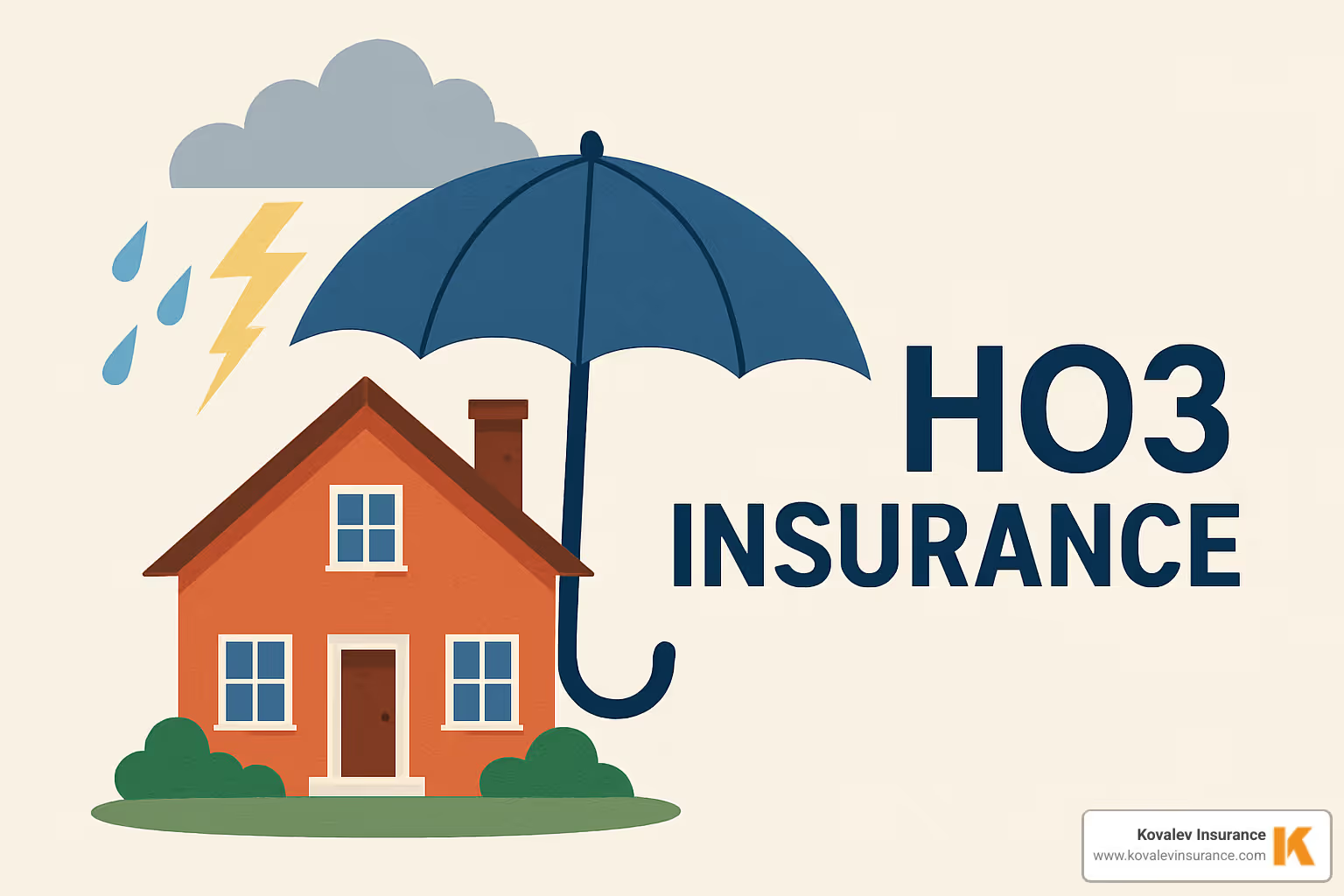
Choosing the right insurance policy can feel overwhelming when you're faced with alphabet soup like HO1, HO2, HO3, and beyond. Think of these numbers as different levels of protection, each designed for specific living situations and coverage needs.
HO3 insurance sits right in the sweet spot for most Massachusetts homeowners. It's more comprehensive than basic policies but more affordable than premium coverage.
The HO1 basic form covers only 10 named perils and is rarely used today. HO2 broad form steps up to 16 named perils but still covers your dwelling and belongings the same way. HO4 is renters insurance for tenants, while HO6 serves condo owners. DP3 dwelling policies serve landlords and rental property owners.
What is HO5 Insurance in Massachusetts?
Both HO3 insurance and HO5 protect your home's structure with open-perils coverage, but they treat your belongings very differently.
HO3 insurance covers your personal property for named perils only. If your expensive camera gets damaged, you need to prove the damage came from one of the 16 covered perils like fire, theft, or windstorm. With HO5 comprehensive coverage, your belongings get the same open-perils protection as your house.
This difference matters most for high-value homes in communities like Wellesley or Needham, where families often own expensive art, jewelry, or collectibles. HO5 typically costs 10-20% more than HO3 insurance, but it shifts the burden of proof in your favor for personal property claims.
Most Massachusetts homeowners find HO3 insurance provides excellent protection at a reasonable cost. Consider upgrading to HO5 if your personal belongings are worth more than 70% of your dwelling coverage.
The difference between HO3 insurance and DP3 comes down to who lives in the home. HO3 insurance is designed for owner-occupied homes—your primary residence in Belmont or Natick where you actually live.
DP3 policies serve rental properties and investment homes. Both provide open-perils dwelling coverage, but DP3 policies typically don't include personal property or liability coverage by default since landlords don't need to insure tenants' belongings.
If you're considering renting out your Brookline home on Airbnb or as a long-term rental, you'll likely need to switch from HO3 insurance to DP3 coverage.
Your basic HO3 insurance policy is just the starting point. The real value comes when you customize it to match your specific needs as a Massachusetts homeowner.
Identity theft coverage has become increasingly popular among Newton and Wellesley homeowners. This endorsement typically costs $25-50 annually but can cover thousands in expenses if someone steals your identity.
Water backup coverage is practically essential in Massachusetts. Our aging infrastructure means sewer backups happen more often than you'd expect, and standard HO3 insurance doesn't cover this damage.
Earthquake coverage might seem unnecessary in Massachusetts, but we do experience seismic activity. The 2011 Virginia earthquake was felt throughout our area.
For flood protection, you'll need a separate National Flood Insurance Program (NFIP) policy. Even if you're not in a designated flood zone, 25% of flood claims come from low-risk areas.
Green building coverage pays extra costs for environmentally friendly materials when rebuilding. Given Massachusetts' focus on energy efficiency, this endorsement ensures you can rebuild to current green standards.
What Does MA Home Insurance Cover?
Nobody wants to file an insurance claim, but when disaster strikes your Brookline home, knowing the process can save you significant stress and money.
Document everything immediately - and I mean everything. Take photos of damage from multiple angles, even areas that seem fine. Insurance adjusters appreciate thorough documentation.
Mitigate further damage right away. Cover broken windows with plywood, tarp damaged roofs, and turn off water if pipes burst. Your HO3 insurance policy requires you to prevent additional damage.
Contact your insurer within 24-48 hours, even if the damage seems minor. Some policies have strict reporting requirements, and early reporting often leads to faster claim resolution.
Choose your deductible carefully when you buy coverage. Higher deductibles reduce premiums but increase your out-of-pocket costs during claims.
Most HO3 insurance claims in Massachusetts resolve within 30-60 days, though complex losses take longer.
Standard HO3 insurance sublimits can leave expensive items dramatically underprotected. I learned this lesson early when a Newton client's $8,000 violin was stolen, but her policy only covered $2,500 for musical instruments.
Jewelry presents the biggest coverage gap for most homeowners. Your $15,000 engagement ring might only receive $1,500-2,500 under standard coverage. Scheduling that ring provides full replacement value with no deductible, typically for about $150-200 annually.
Art and collectibles need special attention in communities like Wellesley and Needham, where many homes contain valuable pieces.
Musical instruments require scheduling if they're worth more than $2,500. Whether it's a piano, guitar, or professional sound equipment, these items need individual coverage.
The scheduling process requires professional appraisals, but the peace of mind is worth it. Scheduled items receive "all-risk" coverage, meaning they're protected against virtually any type of loss except wear and tear.
Let's tackle the most common questions Massachusetts homeowners ask about HO3 insurance. These are the real concerns I hear from families in Newton, Wellesley, and throughout our communities.
Standard HO3 insurance doesn't cover flood or earthquake damage. I know it seems odd, especially when you're paying thousands of dollars for coverage, but these are considered separate risks that need their own protection.
Flood protection comes through the National Flood Insurance Program (NFIP) or private flood insurers. Don't assume you're safe just because you're not in a designated flood zone. I've seen families in Needham and Belmont deal with basement flooding from heavy spring rains that had nothing to do with being near the Charles River.
Flood insurance is more affordable than most people think, especially if you're outside high-risk areas. It typically costs a few hundred dollars annually and can save you tens of thousands if water finds its way into your home.
Earthquake coverage is available as an endorsement to your HO3 insurance policy. While we're not California, Massachusetts does experience minor earthquakes occasionally. The coverage is relatively inexpensive since our seismic risk is low.
Making the jump from HO2 to HO3 insurance is usually worth it, but it requires meeting today's underwriting standards.
Your insurer will likely require a four-point inspection covering your roof, electrical system, plumbing, and HVAC. This isn't meant to be a hassle - it's actually protecting you by identifying potential problems before they become expensive claims.
The roof condition often becomes the biggest factor. If your roof is over 10 years old, you might need to add a Roof Surfacing Payment Schedule (RSPS) endorsement, which gradually reduces coverage as your roof ages.
System updates can be necessary too. That old fuse box from the 1960s or the original cast iron plumbing might need modernization. While this involves upfront costs, newer systems often qualify for discounts that help offset the expense over time.
Your credit score also plays a role in the underwriting process. Massachusetts allows insurers to consider credit when determining rates and eligibility.
The premium increase from HO2 to HO3 insurance is usually modest compared to the significantly broader protection you receive.
Absolutely, and I recommend it for most Massachusetts families. Standard HO3 insurance covers your personal property at actual cash value, which means depreciation gets deducted from any claim settlement.
Replacement cost coverage for personal property typically adds about 10% to your premium but eliminates depreciation from the equation. When your five-year-old washer and dryer are damaged in a basement flood, replacement cost coverage pays for new comparable units rather than their depreciated value.
This upgrade becomes especially valuable in communities like Wellesley and Brookline, where families often have higher-value belongings. The difference between actual cash value and replacement cost can be hundreds or thousands of dollars on a single claim.
Spending an extra $100-200 annually on replacement cost coverage can save you thousands when you actually need to replace damaged belongings.
Your home is more than just four walls and a roof—it's where your family builds memories, where you feel safe, and likely your biggest financial investment. That's why getting your HO3 insurance right matters so much.
Throughout this guide, we've walked through everything you need to know about HO3 insurance in Massachusetts. From understanding the difference between open-perils dwelling coverage and named-perils personal property protection, to knowing that Massachusetts homeowners typically pay around $2,304 annually for $300,000 in dwelling coverage.
The beauty of HO3 insurance lies in its flexibility. Your Newton colonial has different needs than your neighbor's contemporary home in Natick. Maybe you need earthquake coverage, or perhaps scheduling that family heirloom jewelry makes more sense. The key is understanding your options and customizing your coverage to fit your life.
Standard HO3 insurance has gaps—flood damage, earthquake coverage, and higher-value personal property often need special attention. But with the right endorsements and a thorough understanding of your policy, you can create comprehensive protection for your Massachusetts home.
At Kovalev Insurance, we've spent years helping families throughout Greater Boston steer these decisions. Whether you're in Wellesley wondering about replacement cost coverage for your belongings, or in Brookline trying to understand how claims work, we've been there.
The insurance world can feel overwhelming, but it doesn't have to be. Take the time to review your current coverage, ask questions, and make sure your policy grows with your life. That new addition, the upgraded kitchen, or even changes in your neighborhood's risk profile—they all matter when it comes to your HO3 insurance.
Your future self will thank you for getting this right today. Don't wait until disaster strikes to find gaps in your coverage.
Best Homeowners Insurance Massachusetts
Ready to take the next step? Whether you need a fresh quote, want to review your current coverage, or have questions about Massachusetts-specific insurance requirements, we're here to help. Contact Kovalev Insurance today—because protecting your home should be personal, not one-size-fits-all.
X